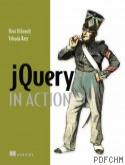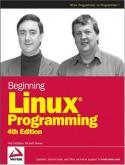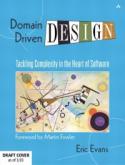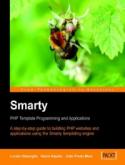Building powerful and robust websites with Drupal 6 Ссылки



jQuery in Action, like jQuery itself, is a concise tool designed to make you a more efficient and effective web developer. In a short 300 pages, this book introduces you to the jQuery programming model and guides you through the major features and techniques you'll need to be productive immediately. The book anchors each new concept in the tasks you'll tackle in day-to-day web development and offers unique lab pages where you immediately put your jQuery knowledge to work.
There are dozens of JavaScript libraries available now, with major companies like Google, Yahoo and AOL open-sourcing their in-house tools. This book shows you how jQuery stacks up against other libraries and helps you navigate interaction with other tools and frameworks.
jQuery in Action offers a rich investigation of the up-and-coming jQuery library for client-side JavaScript. This book covers all major features and capabilities in a manner focused on getting the reader up and running with jQuery from the very first sections. Web Developers reading this book will gain a deep understanding of how to use jQuery to simplify their pages and lives, as well as learn the philosophy behind writing jQuery-enhanced pages.
Practical Subversion, Second Edition draws on the experience of its authors, Daniel Berlin and Garrett Rooneyboth Subversion project membersto guide you through a complete introduction to this popular code management solution. And this edition has been updated to reflect the most recent changes to the popular Subversion version control system. After a crash course on Subversions key features, including a theme project that youre encouraged to follow, youll explore best practices, migration tips for moving from other versioning solutions, Subversion integration, and an overview of the Subversion APIs.
Effective developers and system administrators alike understand that their success is related to their ability to manage the dozens, sometimes hundreds, of files that they come into contact with on a regular basis. This file management includes determining a files changes over time, accommodating simultaneous edits by multiple users, and even reverting a file to an earlier version if a mistake or deletion has been made. Capitalizing on such capabilities requires a version control system like Subversion. Youll want to pick up a copy of this book because it is


With proper training a skilled system designer can take a bad design and rework it into well-designed, robust code. In this book, Martin Fowler shows you where opportunities for refactoring typically can be found, and how to go about reworking a bad design into a good one. Each refactoring step is simple-seemingly too simple to be worth doing. Refactoring may involve moving a field from one class to another, or pulling some code out of a method to turn it into its own method, or even pushing some code up or down a hierarchy. While these individual steps may seem elementary, the cumulative effect of such small changes can radically improve the design. Refactoring is a proven way to prevent software decay.
In addition to discussing the various techniques of refactoring, the author provides a detailed catalog of more than seventy proven refactorings with helpful pointers that teach you when to apply them; step-by-step instructions for applying each refactoring; and an example illustrating how the refactoring works. The illustrative examples are written in Java, but the ideas are applicable to any object-oriented programming language.
In 1994, Design Patterns changed the landscape of object-oriented development by introducing classic solutions to recurring design problems. In 1999, Refactoring revolutionized design by introducing an effective process for improving code. With the highly anticipated Refactoring to Patterns, Joshua Kerievsky has changed our approach to design by forever uniting patterns with the evolutionary process of refactoring.
This book introduces the theory and practice of pattern-directed refactorings: sequences of low-level refactorings that allow designers to safely move designs to, towards, or away from pattern implementations. Using code from real-world projects, Kerievsky documents the thinking and steps underlying over two dozen pattern-based design transformations. Along the way he offers insights into pattern differences and how to implement patterns in the simplest possible ways.

The software development community widely acknowledges that domain modeling is central to software design. Through domain models, software developers are able to express rich functionality and translate it into a software implementation that truly serves the needs of its users. But despite its obvious importance, there are few practical resources that explain how to incorporate effective domain modeling into the software development process.
Domain-Driven Design fills that need. This is not a book about specific technologies. It offers readers a systematic approach to domain-driven design, presenting an extensive set of design best practices, experience-based techniques, and fundamental principles that facilitate the development of software projects facing complex domains. Intertwining design and development practice, this book incorporates numerous examples based on actual projects to illustrate the application of domain-driven design to real-world software development.
Readers learn how to use a domain model to make a complex development effort more focused and dynamic. A core of best practices and standard patterns provides a common language for the development team. A shift in emphasis--refactoring not just the code but the model underlying the code--in combination with the frequent iterations of Agile development leads to deeper insight into domains and enhanced communication between domain expert and programmer. Domain-Driven Design then builds on this foundation, and addresses modeling and design for complex systems and larger organizations.Specific topics covered include:
With this book in hand, object-oriented developers, system analysts, and designers will have the guidance they need to organize and focus their work, create rich and useful domain models, and leverage those models into quality, long-lasting software implementations.


This book is for web developers wanting to learn how to leverage the API in their own applications or how to create bespoke applications in Facebook. It will also appeal to Facebook users who are interested in using the API to develop their own programs. The code in the book is aimed at the beginner–to–intermediate level, so you don’t need to be a pro to use it, but some programming or web development experience is recommended.


Smarty is a templating engine for PHP. Designers who are used to working with HTML files can work with Smarty templates, which are HTML files with simple tags while programmers work with the underlying PHP code. The Smarty engine brings the code and templates together. The result of all this is that designers can concentrate on designing, programmers can concentrate on programming, and they don't need to get in each others way so much. Even if you are developing a site on your own, Smarty is a powerful way to make your code clearer to you and others, as well as easier to debug and modify later.
This book is a comprehensive guide to all aspects of using Smarty. It will help you to:
-Install and configure Smarty on your Web server
- Understand how Smarty affects your web site architecture, and build site foundations that make the most of what Smarty offers
- Designers will learn to work with templates that contain variables
and logic, to modify layouts or content of Smarty web sites
- See how Smarty caching can improve the performance of your sites
- Develop custom Smarty functions and plug-ins to incorporate into your templates
Using a step-by-step approach based on realistic examples, the expert authors show you how to use Smarty in your own PHP development. The book is ideal for PHP developers who are new to Smarty, and for web designers who are working with PHP developers who are using Smarty.

Using Trolltech's Qt you can build industrial-strength C++ applications that run natively on Windows, Linux/Unix, Mac OS X, and embedded Linux without source code changes. Now, two Trolltech insiders have written a start-to-finish guide to getting outstanding results with the latest version of Qt: Qt 4.3.
Packed with realistic examples and in-depth advice, this is the book Trolltech uses to teach Qt to its own new hires. Extensively revised and expanded, it reveals today's best Qt programming patterns for everything from implementing model/view architecture to using Qt 4.3's improved graphics support. You'll find proven solutions for virtually every GUI development task, as well as sophisticated techniques for providing database access, integrating XML, using subclassing, composition, and more. Whether you're new to Qt or upgrading from an older version, this book can help you accomplish everything that Qt 4.3 makes possible.